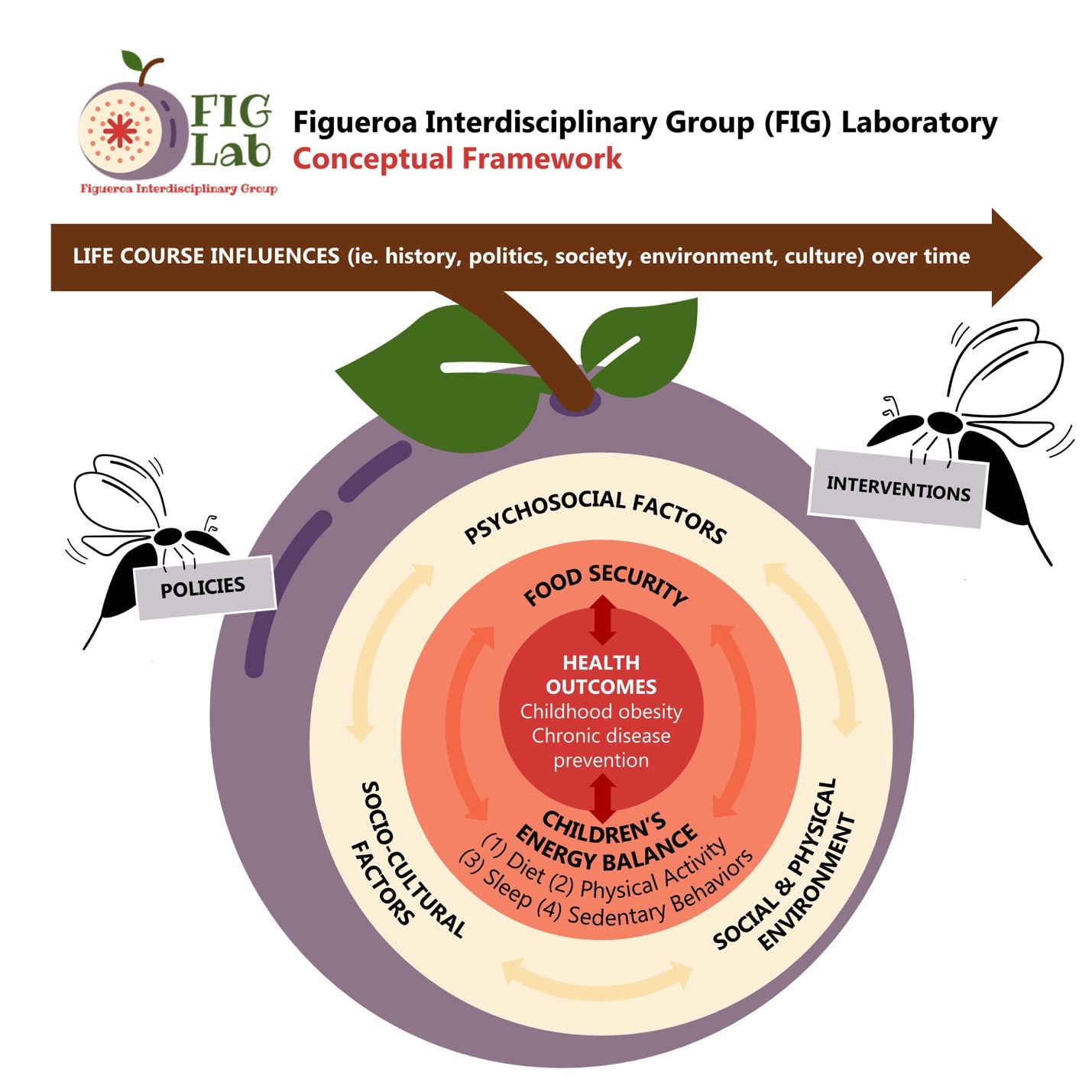Research in the FIG Lab


Current Projects | Research
Current Projects | Research
Community needs assessment on facilitators and inhibitors of food security in Puerto Rico
The purpose of this project is to conduct a community needs assessment to identify facilitators and inhibitors to building capacity towards sustainable food security efforts in an underserved community setting in Toa Alta, Puerto Rico. This study is part of a larger community-based participatory research (CBPR) project, which will employ a community engaged collaborative process to develop a culturally sensitive, family-centered intervention for Puerto Rican parents and their children (aged 0-8) to improve food accessibility, affordability, availability, and intake.
Project FRIENDS
The global food security crisis is often measured by individuals’ access to any food — no matter how healthful the food is — while nutritional security goes unaddressed. This project seeks to change that. Gathering stakeholder input from adult recipients of Cornell Cooperative Extension (CCE) programs in New York State, the team is developing an evidence-based toolkit for addressing nutritional security, its determinants and prospective intervention targets for dissemination and translation through CCE programming.
The Brooklyn Food Environment Analysis project
uses geospatial analysis tools to measure the impact of neighborhood food environments (including fast food restaurants, grocery stores, farmer's markets, bodegas, among others) and socioeconomic factors on diet and chronic disease outcomes in Brooklyn communities. The project is also anticipating expanding its reach to other boroughs in the greater New York City (NYC) area.
The Family Life, Activity, Sun, Health, and Eating (FLASHE) study
The FLASHE study was conducted from April to October of 2014 with a demographically representative U.S. sample of parents and their adolescents recruited from an already existing group of respondents of a panel research organization.1-3 Each parent and adolescent completed two Internet-based surveys. A parent (mother or father) and an adolescent were sampled from each household. Parents went through a screening process, and information on all the children in the household was collected via a full household roster with one eligible adolescent being randomly selected.1-3 Eligible adolescents were between the ages of 12 and 17 and lived in the parent’s household at least 50 percent of the time.1-3 The FLASHE study design, implementation procedures, and methods are outlined in detail elsewhere.1-3
Our lab began working with the FLASHE datasets in 2019. We have been focusing on examining associations between psychosocial factors and energy-balanced behaviors among parent-adolescent dyads.4
- Nebeling, L. C., Dwyer, L., Oh, A., & Hennessy, E. (2017). The Family Life, Activity, Sun, Health and Eating Study: A public use data resource for individual and dyadic analyses of cancer preventive behaviors.
- Nebeling LC, Hennessy E, Oh AY, Dwyer LA, Patrick H, Blanck HM, Perna FM, Ferrer RA, Yaroch AL. The FLASHE study: survey development, dyadic perspectives, and participant characteristics. American Journal of Preventive Medicine. 2017 Jun 1;52(6):839-48.
- Oh AY, Davis T, Dwyer LA, Hennessy E, Li T, Yaroch AL, Nebeling LC. Recruitment, enrollment, and response of parent–adolescent dyads in the FLASHE study. American Journal of Preventive Medicine. 2017 Jun 1;52(6):849-55.
- Baker, K. & Figueroa, R. (2021). Motivation, Attitudes, and Diet Quality Among U.S. Parents and Adolescents. American Journal of Health Behavior. DOI: https://doi.org/10.5993/AJHB.45.1.10
